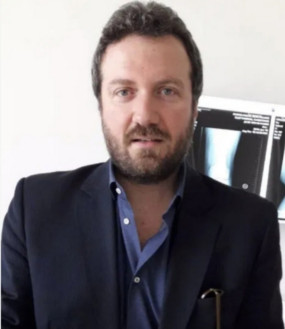
Dr. Georgios Skarpas
ORTHOPAEDIC SURGEON
REGENERATIVE MEDICINE IN ORTHOPAEDICS: How we treat lesions with autologous and MIS TECHNIQUES
Treatment of tissue and articular cartilage lesions remains a challenge for the practising orthopaedic surgeon. A wide range of options are currently practised, ranging from conservative measures through various types of operations and, recently, use of growth factors and emerging gene therapy techniques. Also a wide range of operative options, ranging from simple arthroscopic interventions, marrow tapping techniques, osteochondral auto/allo-grafting and cell-based techniques are used. At present, autologous cell therapies, growth factor techniques, stem cells and biomaterials offer more promising avenues of research to find clinical answers.
There are two distinct chondral injury phenotypes according to attributing factors: focal lesions and degenerative lesions. Focal lesions are well delineated defects, usually caused by trauma, osteochondritis dissecans or osteonecrosis. Degenerative defects are typically poorly demarcated and usually caused as a result of ligament instability, meniscal /soft tissue injuries, malalignment or osteoarthritis.
Trauma is the most common cause of osteochondral lesions in sports injury or accidents. The shearing force creates a stress fracture through cartilage matrix, and sometimes through subchondral bone. E.g. Patellar dislocation leads to osteochondral fracture through this mechanism and is responsible for 40–50% of osteochondral lesions around the femoral condyles
Due to this multifactorial aetiology, the role of prophylactic therapy is dubious. There is a small therapeutic window when cartilage damage is caused by meniscal or ligament damage.
The surgeon can consider one or more of several non-operative approaches according to symptomatology and severity of the lesion. One approach is that of medications, such NSAIDs and analgesics. Next, there are several mechanical approaches including weight loss, rest, ice, canes, bracing, physical therapy. etc. Also, nutrition supply should be considered, with chondroprotective agents (glucoseamine & chondroitin phosphate, MSM, Omega-3, hyaluronic acid, collagen) and calcium and vitamins, as well as intra-articular injections such as steroids and viscosupplementation. To date, there has been no evidence of structural improvement with these conservative modalities.
The basic idea is to adjust treatment to the individual patient, and to repair related and/or contributing problems before or with the treatment of chondral injuries, such as varus-valgus alignment, patellofemoral tracking, stability of cruciate and collateral ligaments and meniscal lesions.
Arthroscopy is the definitive surgical method, especially in the presence of chondral loose bodies; the goal is to restore and preserve function, alleviate pain and minimise progression to osteoarthritis. Surgical treatment for cartilage lesions is contraindicated in some cases as inflammatory arthropathy, unstable or malaligned joint, “kissing lesions” (bipolar), infection and obesity.
SURGICAL OR MINIMAL INVASIVE OPTIONS
- Arthroscopic lavage and debridement
- Marrow tapping techniques-Abrasion arthroplasty
- Subchondral drilling-Microfracture
- Osteochondral autografting—mosaicoplasty
- Osteochondral allografting
- New generation and REGENERATIVE MEDICINE TECHNIQUES
- Autologous cell techniques ACI & MACI
- Growth factors-PRP
- Stem cells-bone marrow cells
- Stimulators of cell metabolism
- Gene therapies (ACI autologous chondrocyte implantation, MACI matrix-induced autologous chondrocyte implantation, PRP platelet rich plasma).
NOVEL TECHNIQUES-NEW FRONTIERS
- Adipose tissue derived stem cells in one or two steps
- Bone marrow cells-modified stem cell treatment in one step
- Chondrocytes/chondrospheres in gel structure
- PRPs
- Biomimetic Scaffolds
- Injectable (typeII )Collagen-Injectable Hyaluronate/+Mannitol, Chondroitin/MSM/Ascorbate
In a 2 step technique we managed to apply the bone marrow cells as gel directly on the lesion after appropriate processing at the lab or in 1 step through a portable lab.
For good regeneration of tissue lesions and osteochondral defects, cells (cultured, fragments, mesenchymal stem cells, etc.), bioscaffolds (natural/synthetic), as well as chondroinductive (TGF) and osteoinductive (BMP) growth factors and stimulators are required. Concomitant problems, ligament tears and/or ligament instabilities should be treated before or simultaneously with cartilage resurfacing.
Our “gold standard” in the treatment of cartilage defect/tissue lesions or our most used treatment option with great results is the autologous stem cell/chondrocyte implantation. Special algorithms are used, relying especially on surface area of the defect/site of lesion and on our surgeon’s unique experience.
Rehabilitation depends on treatment mode used and on defect/lesion personality (classification and qualification). Return to functional work and sport is possible in all procedures, but takes different period
Languages
Greek, English
E skarpasg@gmail.com | orthoacademy.gr

